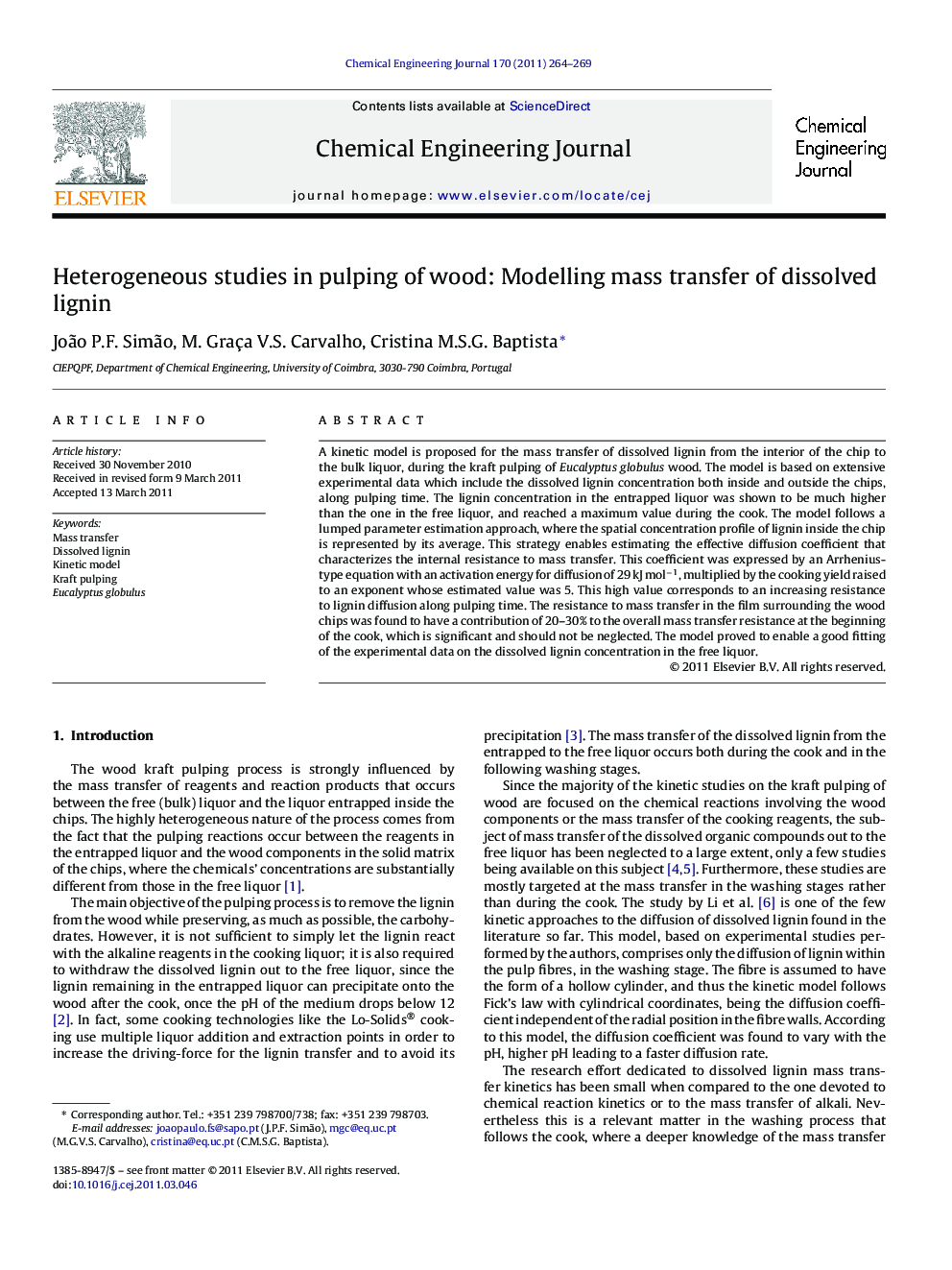| Article ID | Journal | Published Year | Pages | File Type |
|---|---|---|---|---|
| 151308 | Chemical Engineering Journal | 2011 | 6 Pages |
A kinetic model is proposed for the mass transfer of dissolved lignin from the interior of the chip to the bulk liquor, during the kraft pulping of Eucalyptus globulus wood. The model is based on extensive experimental data which include the dissolved lignin concentration both inside and outside the chips, along pulping time. The lignin concentration in the entrapped liquor was shown to be much higher than the one in the free liquor, and reached a maximum value during the cook. The model follows a lumped parameter estimation approach, where the spatial concentration profile of lignin inside the chip is represented by its average. This strategy enables estimating the effective diffusion coefficient that characterizes the internal resistance to mass transfer. This coefficient was expressed by an Arrhenius-type equation with an activation energy for diffusion of 29 kJ mol−1, multiplied by the cooking yield raised to an exponent whose estimated value was 5. This high value corresponds to an increasing resistance to lignin diffusion along pulping time. The resistance to mass transfer in the film surrounding the wood chips was found to have a contribution of 20–30% to the overall mass transfer resistance at the beginning of the cook, which is significant and should not be neglected. The model proved to enable a good fitting of the experimental data on the dissolved lignin concentration in the free liquor.
